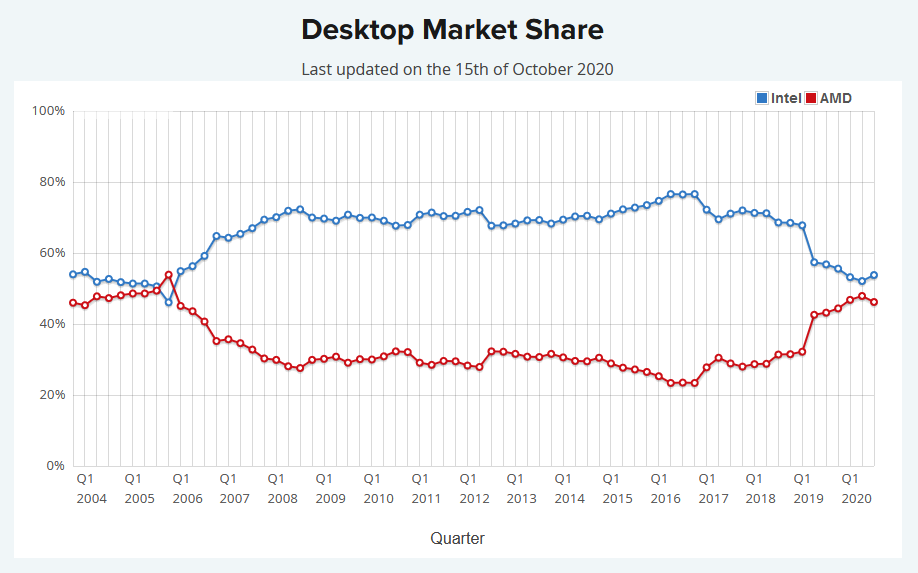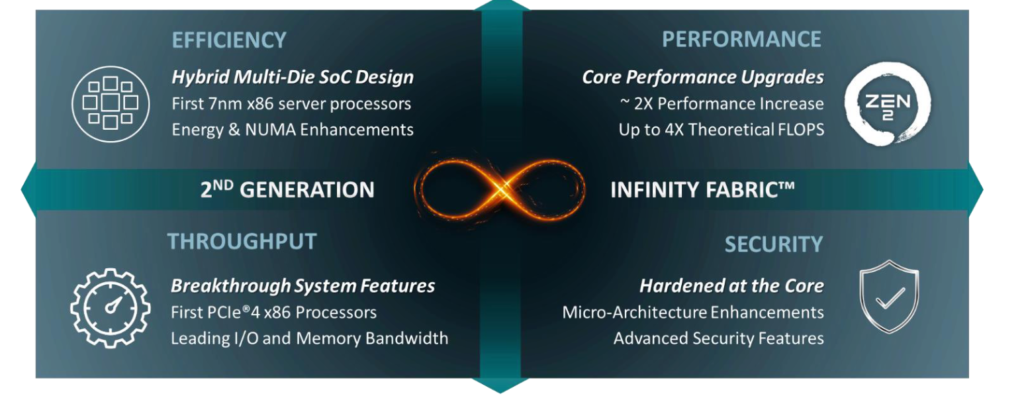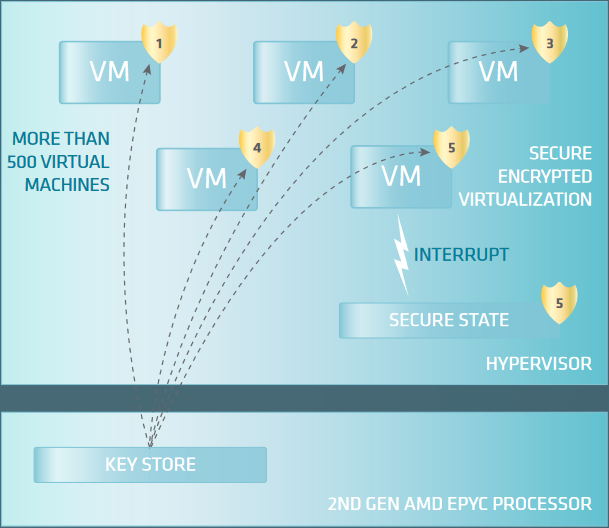This article is a follow up to my last regarding that topic in 2018.
Hence, it offers an update on the wrestling match between AMD and INTEL and some insights regarding VMware.
In addition, I will dive deeper into the current AMD Epyc architecture “Rome” and plot the major improvements and benefits for the workloads.
A Glimpse In The Past And The Actual Situation
Back in 2018 I was thrilled and predicted AMD’s comeback in this article:
Now it finally happened – AMD’s IPC in the consumer market (Desktops and Notebooks) is finally equal to Intel.
Consumer ZEN 3 is announced and already alive – first benchmarks say it beats the counterpart of Intel in IPC performance. Just wow, finally AMD equated. The new desktop processors will be available for sale on the 5th of November.

Furthermore it wasn’t that obvious back in 2018 that AMD will rapidly gain market share in the server market.
But again just astonishing what happens. AMD is now from almost 2% back to 10% share at current server shipments. That is an incredible increase.
Furthermore, there are definitive unique features that are not available with INTEL like:
- PCIe 4.0
- Up to 128 PCIe Lanes in 1 S systems compared to 48 with Intel
- Dedicated ARM chip for enhanced security
- 8 Channel RAM on each CPU
- Higher Core density with up to 64 cores on one socket
Nevertheless, Intel powers unique use cases like:
- SAP Hana
- ???
Other important news regarding the AMD Epyc server processors:
VMware NSX-T (Software defined networking) now supports EDGE node on AMD Epyc on bare metal as well as virtual deployments.
VMware changed its socket licensing, if you have CPUs with more than 32 cores you need 2 socket licenses for 1 socket. The equation gained complexity.
Deep Dive – The State Of The Art With AMD Rome
The second generation of AMD Epyc is called Rome and brings some major improvements.
- Up to 64 cores per socket (128 threads)
- PCIE generation 4.0 with 128 Lanes
- Faster memory channel now at DDR4 3200 MHz from 2666Mhz

- New IO/Mem vs. Chiplet architecture with a mixed manufacturing process 14 nm (mem module) vs. 7 nm (cores)
- Lower local and remote socket latency in the infinity fabric ~ 20 % lower
- Secure Encrypted Virtualization with 509 unique keys a dedicated ARM chip on the die (SEV)
- Encrypt the whole system memory (SME)
- … dedicated virtual machines (SEV)
- … all CPU registers (SEV-ES)

Conclusion
The digitalization just entered a new phase of acceleration and the upcoming processors are just fueling its pace. We heavily rely on processing power in large parts of our lives.
Especially in data centers these improvements are bombshell and will make people reconsider their decisions.
So let’s look what will happen next.
Stay healthy, save and best regards…
